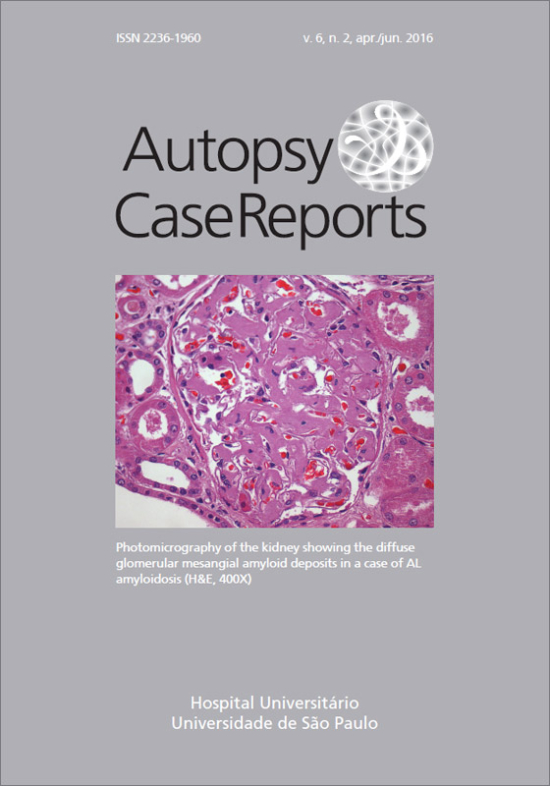Gonococcal endocarditis: an ever-present threat
DOI:
https://doi.org/10.4322/acr.2016.037Keywords:
Endocarditis, Bacterial, Neisseria gonorrhoeae, Aortic valve, AutopsyAbstract
The incidence of severe complications of the Neisseria gonorrhoeae infection has presented variations over recent decades since the advent of penicillin. Gonococcal endocarditis (GE) still remains an ever-present threat afflicting the society’s poor and sexually active young population. This entity frequently requires surgical intervention and usually exhibits a poor outcome. The interval between the onset of symptoms and the diagnosis does not usually exceed 4 weeks. One of the characteristics of GE is a proclivity for aortic valve involvement with large vegetation and valve ring abscess formation. The authors report the case of a young man with a 2-week history of fever, malaise, weakness, and progressive heart failure symptoms, who had no previous history of genital complaints or cardiopathy. The physical examination was consistent with acute aortic insufficiency, which was most probably of an infectious origin. The echocardiogram showed thickened aortic cusps and valve insufficiency. After hospital admission, the patient’s clinical status worsened rapidly and he died on the second day. The autopsy findings disclosed aortic valve destruction with vegetation and a ring abscess besides signs of septic shock, such as diffuse alveolar damage, acute tubular necrosis, and zone 3 hepatocellular necrosis. The blood culture isolated N. gonorrhoeae resistant to penicillin and ciprofloxacin. The authors call attention to the pathogen of this particular infectious endocarditis, and the need for early diagnosis and evaluation by a cardiac surgery teamDownloads
Download data is not yet available.
Published
2016-06-11
Issue
Section
Article / Autopsy Case Report
License
Copyright
Authors of articles published by Autopsy and Case Report retain the copyright of their work without restrictions, licensing it under the Creative Commons Attribution License - CC-BY, which allows articles to be re-used and re-distributed without restriction, as long as the original work is correctly cited.
How to Cite
Campos, F. P. F. de, Kawabata, V. S., Bittencourt, M. S., Lovisolo, S. M., Felipe-Silva, A., & Lemos, A. P. S. de. (2016). Gonococcal endocarditis: an ever-present threat. Autopsy and Case Reports, 6(2), 19-25. https://doi.org/10.4322/acr.2016.037



